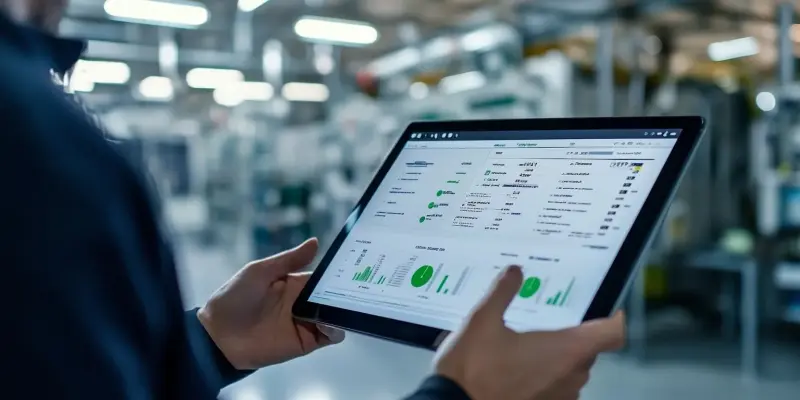Many Australian businesses relying on Microsoft’s Dynamics GP are now facing the imperative need to transition due to Microsoft’s official end-of-life schedule for this prominent ERP solution. As the EOL dates approach, organizations must embrace innovative technologies to modernize their operations. This change presents not only challenges but also significant strategic growth opportunities.
Key Milestones in Dynamics GP Lifecycle
Discontinuation of Perpetual and Subscription Licenses
Microsoft has declared several key dates that mark critical points in Dynamics GP’s lifecycle. Beginning April 1, 2025, perpetual licenses for new customers will no longer be available. By April 1, 2026, both perpetual and subscription licenses for new customers will be discontinued. This stringent timeline signifies the necessity for businesses to start their planning processes well in advance to avoid last-minute complications that could arise from the unavailability of licenses.
Transitioning to a new ERP solution requires careful coordination and assessment to ensure continuity and minimize disruptions. It’s not just about replacing one system with another; it involves assessing current workflows, data integrity, and user adaptability to new software. Early planning within the next 12 to 36 months is crucial. It allows organizations to map out a structured pathway for migration, leveraging this transition period as an opportunity to enhance their operational capabilities and overall business performance.
End of Mainstream and Security Support
As part of the EOL schedule, mainstream support for Dynamics GP will conclude on September 30, 2029. This means no further product updates, regulatory compliance patches, or technical support will be provided. Following this, on April 30, 2031, Microsoft will cease providing security updates, marking the final phase of Dynamics GP. These deadlines underscore that Dynamics GP is transitioning into a legacy system, and businesses must proactively plan to move to more modern and supported platforms.
Post-mainstream support, the absence of regular updates could mean exposure to security vulnerabilities and operational inefficiencies. Companies might find themselves at a competitive disadvantage, with an increased risk of running outdated and potentially non-compliant systems. Therefore, understanding and acknowledging these key dates helps in risk management and aligns IT strategies with business growth objectives. Addressing these changes head-on will open pathways for adopting more advanced, efficient, and secure ERP solutions.
Strategic Growth Opportunities with Dynamics 365 Business Central
Enhancing Resource Efficiency and Future-Proofing Operations
Microsoft recommends migrating to Dynamics 365 Business Central, a robust cloud-based ERP solution. Business Central represents the future vision for modern ERP systems, offering an array of benefits that aid in enhancing resource efficiency and future-proofing business operations. By migrating, organizations can eliminate the costs associated with maintaining outdated systems while benefiting from continuous updates and new features. This proactive move ensures that businesses remain agile and resilient in a rapidly evolving market landscape.
The transition to Business Central is not merely a technological upgrade; it also involves a strategic shift towards utilizing AI-driven insights. These insights facilitate informed decision-making and seamless integration with other Microsoft tools such as Outlook, Excel, and Teams. The real-time availability of data and advanced analytics provided by Business Central can transform how resources are managed, improving overall efficiency. Additionally, its cloud infrastructure supports secure, flexible, and remote work environments, which have become essential in today’s business operations landscape.
Leveraging AI-Driven Insights and Cloud Infrastructure
The migration to Dynamics 365 Business Central allows businesses to leverage AI-driven insights that can significantly enhance decision-making processes. With seamless integration capabilities with Microsoft tools like Outlook, Excel, and Teams, Business Central offers a unified platform that streamlines communication and enhances productivity. This integration is crucial for creating a cohesive work environment where data flows seamlessly across various applications, enabling teams to collaborate more effectively and efficiently.
Moreover, the cloud-based nature of Business Central guarantees a flexible and scalable solution that can support businesses’ growth ambitions. With regular updates and new features, organizations can stay ahead of technological advancements and industry trends. The cloud infrastructure also offers robust security measures, ensuring that sensitive business data is protected against threats. Adopting Business Central means embracing a future-proof solution that not only addresses current needs but also positions businesses for ongoing success and innovation.
Ensuring a Smooth Migration Process
Partnering with ERP Experts
To make the transition from Dynamics GP to Business Central as smooth as possible, partnering with experienced ERP experts like Professional Advantage can be highly beneficial. These partners bring invaluable expertise in assessing the existing Dynamics GP environment, identifying new opportunities aligned with organizational goals, and customizing Business Central to meet industry-specific requirements. They play a critical role in leveraging migration tools that minimize operational disruptions, ensuring a seamless transition.
Professional ERP partners assist businesses in planning for scalability that aligns with their growth trajectory. They evaluate current setups and develop comprehensive migration roadmaps tailored to each company’s unique needs, strategic priorities, and budget constraints. Engaging with an ERP partner early in the process facilitates a well-coordinated migration, reducing risks and maximizing potential benefits. This collaboration ensures that businesses are well-prepared to embrace new technologies and processes without compromising operational integrity.
Developing a Comprehensive Migration Roadmap
Many Australian businesses that have been relying on Microsoft’s Dynamics GP now find themselves confronted with the urgent need to transition to new systems. This shift is necessitated by Microsoft’s official end-of-life schedule for this widely used ERP solution. As the EOL dates draw closer, organizations are compelled to adopt innovative technologies to modernize their operations and maintain efficiency. This situation, while challenging, also opens up a wealth of strategic growth opportunities for these businesses.
By integrating more advanced solutions, companies can streamline their processes, enhance productivity, and stay competitive in today’s fast-paced market. The transition away from Dynamics GP should be viewed not just as an obligation but as a chance to reassess and potentially overhaul existing operational practices, thereby positioning businesses for future success. This pivotal moment offers a valuable opportunity to embrace cutting-edge technologies, ultimately leading to sustained growth and a stronger market presence in the long term.

